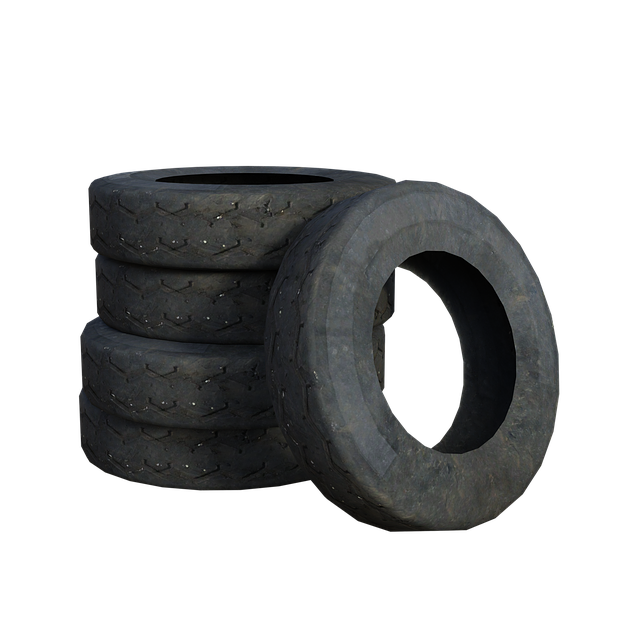Remanufactured Collision Parts: Quality, Safety, and Cost-Effective Choices
Remanufactured collision parts provide an eco-friendly and cost-efficient solution for auto body rep…….
Welcome to an in-depth exploration of a fascinating aspect of the automotive sector—remanufactured collision parts. In today’s fast-paced world, where sustainability and cost-effectiveness are paramount, remanufacturing has emerged as a game-changer. This article aims to unravel the complexities of remanufactured collision parts, their global impact, and the numerous benefits they bring to both industries and consumers. By delving into various facets, from technological advancements to policy implications, we will uncover how this process is shaping the future of automotive repairs and recycling.
Definition: Remanufactured collision parts, often simply referred to as ‘reman’ or ‘remanufactured,’ are automotive components that have been recovered from damaged vehicles after a collision or accident. These parts are then meticulously inspected, repaired, and refurbished to meet original equipment manufacturer (OEM) specifications. The remanufacturing process involves several steps, including disassembly, cleaning, repair or replacement of worn-out parts, testing, and finally, recertification.
Core Components: The key elements of a successful remanufactured collision part program include:
Historical Context: The concept of remanufacturing is not new, but its prominence in the automotive industry has evolved significantly over time. Initially, it was a way to extend the life of valuable parts and reduce waste. With growing environmental concerns and stricter regulations, remanufactured collision parts have become a sustainable solution, offering cost savings and contributing to a circular economy.
The influence of remanufactured collision parts is a global phenomenon, with varying degrees of adoption and acceptance across regions. Here’s an overview:
| Region | Market Adoption | Driving Factors | Challenges |
|---|---|---|---|
| North America | High | Strong environmental regulations, advanced manufacturing capabilities | Concerns over quality consistency |
| Europe | Moderate-High | Stringent waste management policies, growing awareness of circular economy | Variations in standards across countries |
| Asia-Pacific | Growing | Increasing automotive market, government incentives for recycling | Limited infrastructure for remanufacturing |
| Latin America | Low-Moderate | Emerging auto industry, cost-effectiveness | Lack of standardized quality control measures |
Trends Shaping the Industry:
The economic aspects of the remanufactured collision parts industry offer a compelling narrative of sustainability and profitability.
Market Dynamics:
Investment Patterns:
Economic Benefits:
Technological breakthroughs have been pivotal in transforming remanufactured collision parts into a sophisticated and efficient process.
Key Innovations:
Impact on Industry: These technologies have improved the accuracy, speed, and overall quality of remanufactured collision parts. They contribute to reduced production times, lower labor costs, and enhanced product consistency.
The regulatory landscape plays a crucial role in shaping the growth and acceptance of remanufactured collision parts.
Key Policies and Regulations:
Influencing Industry Development: Governments’ support through incentives and favorable regulations has been instrumental in fostering the growth of remanufacturing facilities worldwide. These policies encourage businesses to invest in sustainable practices, leading to technological advancements and improved standards.
Despite its numerous benefits, the remanufactured collision parts industry faces certain challenges and criticisms that require attention.
Main Challenges:
Proposed Solutions:
Let’s explore a few case studies to understand the practical application and impact of remanufactured collision parts.
Case Study 1: AutoTech Remanufacturing (North America)
AutoTech, a leading North American reman manufacturer, adopted advanced inspection technologies and automated disassembly lines. They focused on providing high-quality brakes and suspension components for light vehicles. By implementing these improvements, AutoTech achieved:
Case Study 2: GreenAuto (Europe)
GreenAuto, based in Germany, specializes in remanufacturing engine components. They utilized digital twin technology for virtual testing, which resulted in:
Case Study 3: AsiaReman (Asia-Pacific)
AsiaReman, a Chinese remanufacturing company, focused on expanding its reach and improving standards. Their strategies included:
The future of remanufactured collision parts holds immense potential as the automotive industry continues its evolution towards sustainability and cost-effectiveness.
Emerging Trends:
Strategic Considerations:
Remanufactured collision parts have emerged as a powerful force in the automotive industry, offering a sustainable and cost-effective alternative to traditional repairs. As the world grapples with environmental challenges, this process provides a compelling solution for reducing automotive waste and conserving resources. With technological advancements, favorable policies, and growing consumer awareness, the future of remanufactured collision parts appears bright.
The industry’s potential is vast, from expanding global markets to creating new job opportunities. By addressing challenges through innovation and collaboration, remanufacturing can play a pivotal role in shaping a more sustainable automotive landscape. As we move forward, the benefits of this practice will continue to resonate across industries and communities worldwide.
Q: Are remanufactured collision parts safe for my vehicle?
A: Absolutely! Reman parts are subject to the same safety standards as new or aftermarket components. They undergo rigorous testing to ensure they meet performance requirements, offering the same level of safety and reliability.
Q: How do I know if a part is remanufactured?
A: Many manufacturers provide clear indications on their websites or packaging. Look for terms like ‘reman,’ ‘refurbished,’ or ‘remanufactured.’ Some even offer serial numbers or unique identifiers to trace the part’s origin and history.
Q: Can reman parts match the performance of new ones?
A: In most cases, yes. Modern remanufacturing techniques ensure that refurbished parts perform as well as new ones. However, for highly specialized components, it’s always best to consult with a professional mechanic.
Q: Are there environmental benefits to using reman parts?
A: Yes, significantly. Remanufacturing reduces the need for raw materials, minimizes waste, and lowers energy consumption compared to producing new parts from scratch. It contributes to a more sustainable automotive industry.
Q: Can I find reman parts online?
A: Certainly! Many e-commerce platforms specialize in remanufactured collision parts, making them easily accessible. Online marketplaces offer convenience for consumers and repair shops, allowing for quick purchases and deliveries.

Remanufactured collision parts provide an eco-friendly and cost-efficient solution for auto body rep…….

Remanufactured collision parts offer a sustainable, cost-effective, and safe solution for automotive…….

Remanufactured collision parts offer a budget-friendly, sustainable solution for auto repairs, utili…….

Remanufactured collision parts are transforming the automotive sector with their cost-saving and eco…….

Remanufactured collision parts provide a sustainable, cost-effective solution for automotive repairs…….

Remanufactured collision parts are a cost-effective and eco-friendly alternative to new replacements…….